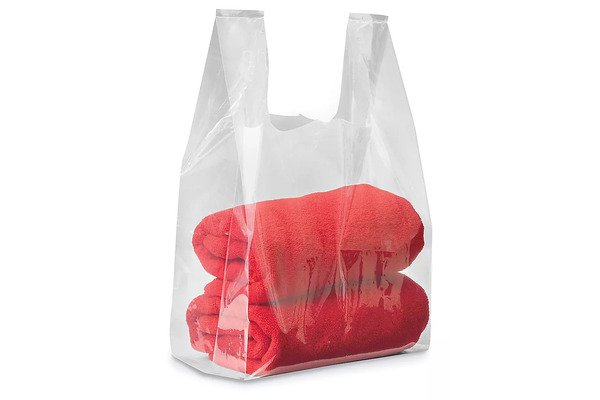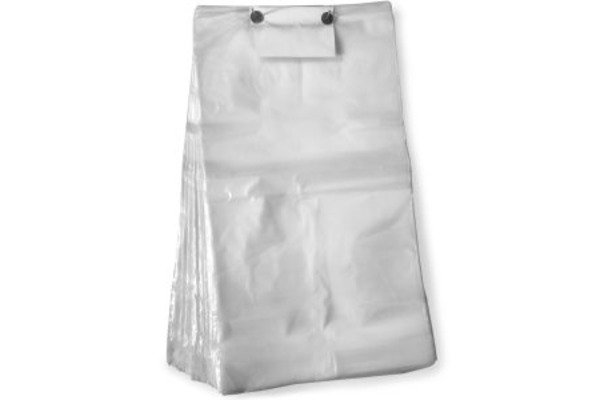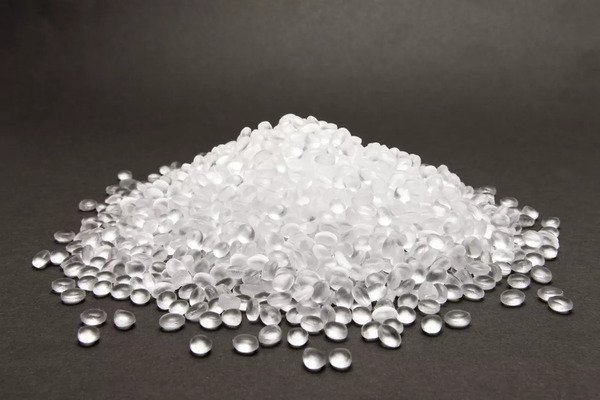
Are you trying to figure out what plastic bags are actually made of? This confusion can make it hard to choose the right materials or machinery for your production needs. Let's clear it up.
The main raw material for most plastic bags is polyethylene, a versatile and cost-effective polymer. It is derived from petroleum or natural gas. The two most common types are High-Density Polyethylene (HDPE) and Low-Density Polyethylene (LDPE).
Polyethylene is the foundation of the modern packaging industry. It's a thermoplastic, which means it can be melted and reformed. This process starts with raw materials like natural gas, which are processed into ethylene gas. Through a process called polymerization, these small ethylene molecules (monomers) are linked into long chains, creating polyethylene resin pellets. These pellets are the starting point for bag production. At BagMec®, our machines are engineered to handle these different resins, from robust HDPE for shopping bags to flexible LDPE for food packaging.
The specific type of polyethylene used dictates the final bag's characteristics. HDPE has a crystalline structure, making it strong, stiff, and opaque. This is perfect for thin, lightweight bags that need to carry weight, like grocery T-shirt bags. In contrast, LDPE has a more branched molecular structure, resulting in a softer, clearer, and more flexible film. It's ideal for applications where clarity and pliability are important. Our specialized machines are calibrated to work with the unique properties of each material, ensuring optimal performance and minimal waste.
What Polymer Is Used to Make Cheap Plastic Bags?
Ever wonder how those thin, crinkly grocery bags are made so cheaply? The secret is in the specific type of plastic polymer used. It allows for mass production at a very low cost.
High-Density Polyethylene (HDPE) is the polymer of choice for making cheap plastic bags. Its high strength-to-density ratio allows manufacturers to use very little material to create a durable bag, which significantly cuts down production costs.
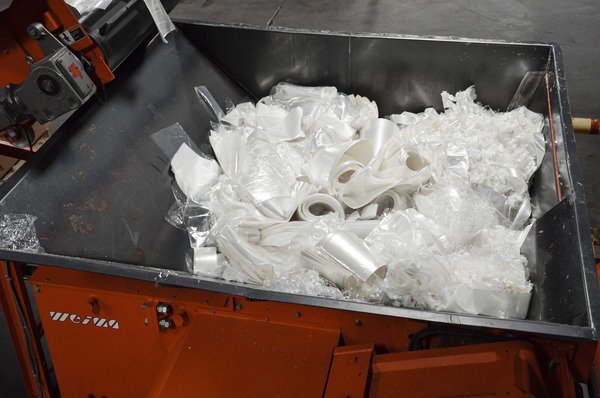
Why HDPE Dominates Low-Cost Bag Production
HDPE's molecular structure is the key to its cost-effectiveness. The polymer chains are long and have very few branches. This allows them to pack closely together, creating a dense and crystalline material. This structure gives HDPE several advantages for low-cost bag manufacturing:
- Exceptional Strength: Even when stretched into a very thin film, HDPE remains strong and resistant to tearing. This means a manufacturer can produce more bags from the same amount of raw material, a concept known as "down-gauging."
- Low Material Cost: HDPE resin is one of the most affordable polymers on the market due to its simple production process and the wide availability of its raw materials (natural gas and oil).
- Efficient Processing: HDPE has a good melt flow, meaning it can be processed quickly and efficiently on high-speed machines. At BagMec®, our T-Shirt Bag Making Machines are specifically designed to run HDPE films at speeds up to 1,200 bags per hour, maximizing output for our clients.
Comparing Common Bag Polymers
While HDPE is the go-to for low-cost bags, it's not the only polymer we work with. Different applications require different materials. Understanding the trade-offs is crucial for any packaging business. Here is a simple comparison:
| Feature | High-Density Polyethylene (HDPE) | Low-Density Polyethylene (LDPE) | Linear Low-Density Polyethylene (LLDPE) |
|---|---|---|---|
| Primary Use | T-shirt bags, garbage liners | Bread bags, food packaging | Heavy-duty sacks, courier bags |
| Strength | High tensile strength | Lower tensile strength | High puncture resistance |
| Clarity | Opaque / Translucent | High clarity / Transparent | Medium clarity |
| Flexibility | Stiff, crinkly feel | Soft, very flexible | Flexible with high stretch |
| Cost | Lowest | Low to Medium | Medium |
| BagMec® Machine | T-Shirt Bag Machine | Wicketer Bread Bag Machine | Heavy Duty Bag Machine |
The Right Machine for the Right Material
Choosing the right polymer is only half the battle. You need a machine that can handle it properly. For a business owner like Priya Kapoor, a startup founder in India, the goal was a compact and affordable machine for e-commerce mailers. She needed reliability without a huge initial investment.
Our Courier Bag Making Machine (starting at $23,000) was the perfect solution. It is designed to work with LLDPE and co-extruded films, ensuring the tear-resistant seams needed for logistics. And because we offer full technical support, she never had to worry about the challenges she faced with previous vendors. This shows that even when cost is a factor, the right machine partner makes all the difference.
What's the Difference Between LDPE and HDPE?
You often hear the terms LDPE and HDPE, but what really sets them apart? While both are polyethylene, their small structural differences create big changes in how they look, feel, and perform.
The main difference lies in their molecular density. HDPE has a more tightly packed, crystalline structure, making it strong and rigid. LDPE has a less dense, branched structure, making it soft, clear, and flexible.
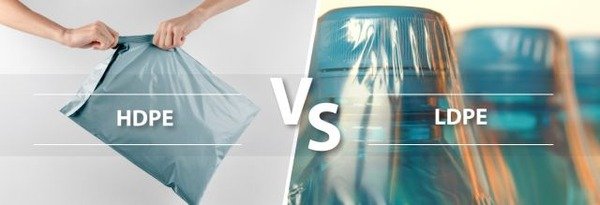
A Deeper Look at Molecular Structure
The terms "High-Density" and "Low-Density" refer directly to how the polymer chains are arranged at a microscopic level.
-
HDPE (High-Density Polyethylene): Imagine a box filled with perfectly straight, uncooked spaghetti. The strands can pack very tightly together. This is similar to HDPE. Its polymer chains are linear with very little branching. This dense structure is what gives HDPE its signature stiffness and strength. It’s why an HDPE bag feels crinkly to the touch.
-
LDPE (Low-Density Polyethylene): Now, imagine a box filled with cooked spaghetti. The strands are tangled and have lots of space between them. This is like LDPE. Its polymer chains have many branches, which prevent them from packing tightly. This "low-density" structure makes the material much more flexible and transparent.
Practical Applications and Machine Choices
These structural differences directly translate to their use cases in the packaging world. As manufacturers, we build machines optimized for these unique properties.
LDPE Applications
Because it is soft, clear, and provides a good moisture barrier, LDPE is ideal for:
- Food Packaging: Its clarity showcases the product inside, which is why it's used for bread bags, frozen food bags, and produce bags. Our Wicketer Bread Bag Machine is a high-end system ($69,000–$88,000) designed for this specific market, ensuring perfect seals and high-speed production for food-grade applications.
- General Packaging: It is also used for lighter retail bags and liners where flexibility is more important than raw strength. Our Side Sealing Bag Machines ($10,500-$18,500) are excellent for producing these types of bags from LDPE film.
HDPE Applications
HDPE's strength and low cost make it the workhorse of the industry for:
- Retail Shopping Bags: The classic "T-shirt" style grocery bag is the most common example. It can be made incredibly thin while still holding significant weight.
- Industrial Liners: Garbage bags and container liners benefit from HDPE's toughness and chemical resistance. Our Garbage Bag Machines are built to handle the high-stress production of these essential items.
- Barrier Packaging: The dense structure provides a good barrier against moisture.
For a procurement manager like Hans Fischer in Germany, the choice is critical. He needed a high-speed zipper bag machine for frozen food. His challenge was meeting strict EU hygiene standards. Here, a laminated pouch made with layers including LDPE or LLDPE was the answer. Our Lamination Pouch Making Machine ($34,000-$67,000) provided the quality and compliance he needed, demonstrating that the right material choice solves complex challenges.
How Are Biodegradable Plastic Bags Made?
As the world focuses more on sustainability, what about eco-friendly alternatives? Many businesses now want bags that don't harm the environment. This has led to innovation in biodegradable raw materials.
Biodegradable bags are typically made from plant-based polymers like Polylactic Acid (PLA) or Polyhydroxyalkanoates (PHA). These materials are derived from renewable resources like corn starch or sugarcane and can be broken down by microbes.
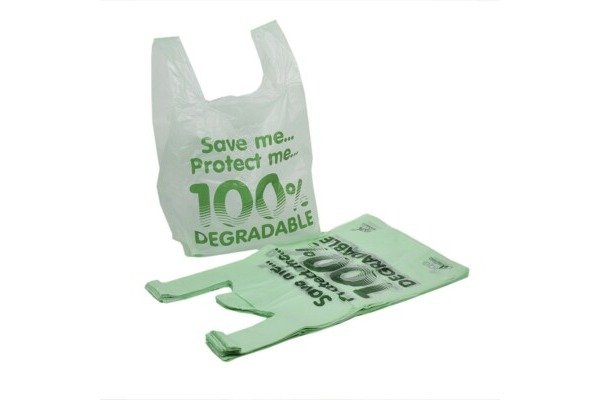
The Science Behind Plant-Based Polymers
Unlike traditional plastics from fossil fuels, biodegradable polymers come from nature. The two leading materials are:
-
PLA (Polylactic Acid): This is the most common bioplastic. It is made by fermenting a carbohydrate source, usually corn starch. The process creates lactic acid, which is then converted into a polymer. PLA looks and feels much like traditional clear plastic (PP or PS) but is commercially compostable. This means under the right conditions (heat, moisture, microbes), it breaks down into water, carbon dioxide, and organic matter.
-
PHA (Polyhydroxyalkanoates): This polymer is made by microorganisms that produce it as an energy reserve, similar to how humans store fat. By feeding these microbes specific nutrients, they can be farmed to produce PHA. PHA is often more flexible than PLA and can biodegrade in a wider range of environments, including soil and marine settings.
Manufacturing Challenges and Solutions
Working with bioplastics isn't the same as working with HDPE or LDPE. These materials have different properties that require specialized machinery.
- Temperature Sensitivity: Bioplastics like PLA have a lower melting point and can be more sensitive to heat. Precise temperature control during the extrusion and sealing process is critical to avoid burning the material or creating weak seals.
- Material Brittleness: PLA can be more brittle than traditional plastics. This requires careful handling and specific machine calibrations to prevent cracking, especially around die-cuts and handles.
At BagMec®, we have embraced this shift toward sustainability. We collaborated with a US-based eco-brand to co-develop machines specifically for their biodegradable PLA films. Our patented "Smart Tension Control" system was adapted to handle the unique elasticity of PLA, and our heating elements were redesigned for lower, more stable temperatures. This partnership enabled the brand to produce 100% compostable shopping bags, meeting the demands of zero-waste retail chains. Our focus on future-ready technology means our machines are already optimized for these new, sustainable materials.
Biodegradable vs. Compostable vs. Recyclable: What's the Difference?
These terms are often used interchangeably, but they mean very different things. Understanding the distinction is key for a responsible business.
| Term | Definition | End-of-Life | Example |
|---|---|---|---|
| Biodegradable | Can be broken down by microbes over time. | Varies greatly; can take years and may leave behind microplastics. | Oxo-degradable plastics (often controversial). |
| Compostable | Breaks down into organic matter in a specific timeframe under controlled conditions. | Becomes nutrient-rich soil (compost) in an industrial or home compost facility. | PLA and PHA bags. |
| Recyclable | Can be collected, reprocessed, and manufactured into a new product. | Melted down and reformed into new plastic goods. | HDPE and LDPE bags. |
Our machines are built to be versatile. Whether a customer is running recycled HDPE content or pioneering new compostable films, our systems provide the precision and reliability needed to succeed in a changing market.
Conclusion
The raw material of a plastic bag, from standard HDPE and LDPE to advanced PLA, defines its cost, function, and environmental impact. Understanding these polymers is the first step to choosing the right production solution for your business goals.

